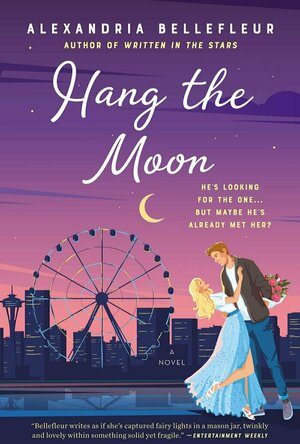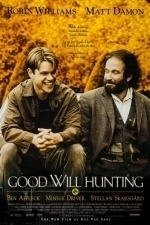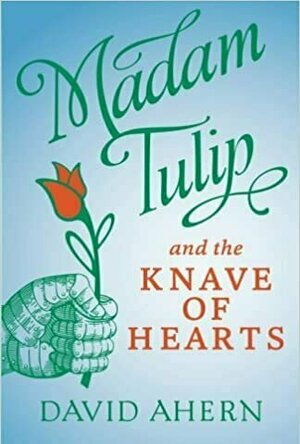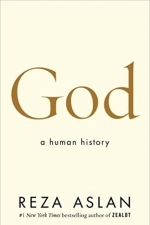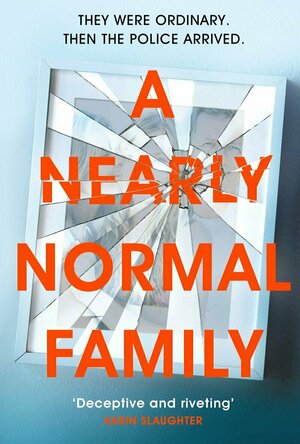Kristy H (1252 KP) rated Hang the Moon in Books
May 27, 2021
"You couldn't be disappointed when someone stopped caring if you never expected them to in the first place."
I really enjoyed WRITTEN IN THE STARS and Darcy and Elle's story, so I was excited to read the next book in the series. I liked Brendon's tale, but not quite as much as Darcy and Elle's, mostly because I'm from the LGBTQIA community, and it was so refreshing to have a f/f story in Darcy and Elle. Still, Brendon is such a cutie, and his unyielding faith in love is pretty sweet.
Annie is a good addition to the group--she shows up a bit in book one. She is, of course, the complete opposite of Brendon: completely apathetic about love. But when she arrives in Seattle for a two-week vacation, with some life-changing news for Darcy, and her best friend isn't there, she can't help but enjoy her time with Brendon. Brendon resolves to use his favorite romantic films as a blueprint to woo Annie, but it turns into a comedy of errors, with nothing really turning out the way he planned.
"'Let's say that I needed to prove to someone that romance isn't dead.'"
Many of their interactions are humorous and the banter witty and funny, though I felt the "optimist" versus "pessimist," "will she stay or will she go" storyline was rehashed a bit much, as the plot gets hung up and stagnates for a bit until things pick up again. But, Brendon's sweet personality and Annie's willingness to give new things a try carry the book, along with its overall humor. It's nice to get some appearances from Darcy and Elle, though it severely lacks enough Margo (thank goodness she's the focus of book three).
Overall, this is a cute romance featuring winning leads. It's repetitive in places, but also flirty and fun. 3.5 stars, rounded up here.
BankofMarquis (1832 KP) rated Good Will Hunting (1997) in Movies
Jul 9, 2021
Leaning hard on the mantra “write what you know”, GOOD WILL HUNTING tells the tale of a generationally talented math prodigy, who grew up in South Boston and fights his demons to find his place in this world.
Famously, the screenplay of this film earned Damon and Affleck Oscars for Best Original Screenplay and it is well deserved. They paint a picture of life of these “Southies” that appears to me real and genuine. The “family” feel of the friendship of the main characters rings true and Damon and Affleck have real chemistry with each other - like old friends playing off each other.
However, the relationship between Affleck and Damon’s character in this film is only the 3rd best relationship in this film. The best, of course, is the relationship between Will Hunting (Damon) and the shrink that is assigned to him, played by Robin Williams. It is a haunting, raw, emotional and REAL performance by Williams - one very deserving of the Oscar - and I was more than a little sad to watch this performance knowing that this uniquely talented performer is no longer with us.
The surprise to me in this rewatch of the film is the performance of Minnie Driver as a young lady that becomes emotionally attached to Will. Driver’s performance as Harvard student Skylar is also real and the struggles of her character to get a connection with Will was heartbreaking to watch.
Good Will Hunting also features strong supporting work by Stellan Skarsgard as the MIT Math Professor who discovers - and then becomes jealous of - Will’s talents and Ben Affleck’s younger brother, a then unknown Casey Affleck, who steals almost every scene he is in.
All of this would not have worked without the magnificent, Oscar nominated, Direction of Gus Van Sant (DRUGSTORE COWBOY). He was the perfect choice to direct this intimate, personal drama and he has a way of drawing out the emotions and rawness of the characters on the screen without being cloying or overdramatic. He was a strong contender for Best Director that year (as was Good Will Hunting for Best Picture) but it ran into a roadblock that was James Cameron and TITANIC.
If you have never seen this film - or if you haven’t seen this in quite some time - check out GOOD WILL HUNTING, it is well worth your time.
Letter Grade: A
9 stars (out of 10) and you can take that to the Bank(ofMarquis)
BookInspector (124 KP) rated Madam Tulip and the Knave of Hearts (Madam Tulip, #2) in Books
Sep 24, 2020
This book is a second part in Madam Tulip series, and normally, the first part is the one to wow readers to come back for more, but in this case, the second part was way better for me than the first one.
The first part was more of an introduction to Madam Tulip and what she is capable of, in this part things get more serious. Another difference was that, the first part was more like cosy mysteries; the second one loses its coziness and is more action filled, and more intense. Once again, Ahern chose his characters very skillfully. We have some which are incredibly eccentric and real personalities, and others, who are down to earth and very realistic. I honestly do not know how Ahern done his research for his books, but the details about royalty, elegance, old historical houses were a true pleasure to read about. Moreover, the details about historical house and laws of royal inheritance were really accurate and incredibly believable, so, well done to the author.
The narrative was once again told from Derry’s perspective, and in this book I was missing multiple perspectives, as I believe, it helps to understand other characters way better. I really enjoyed that Ahern played with this narrative more, incorporating different approaches in Derry’s life (working for her mom). In this novel there was less of Madam Tulip herself, and more of Derry and her bad luck to end up in dangerous situations. Another well done to the author for increasing the level of action in this novel, I really enjoyed unexpected turns and unusual places chosen for it. One thing what left me debating with myself was the “bad guy” in this book, he was very well picked, but at the same time very obvious and predictable. Even though this book is a second part in the series, it can easily be a standalone mystery, because Ahern explained everything a “new reader” needs to know.
The writing style of this book changed as well. It is more skillful and there are more difficult terms used in this novel, but it did not make it difficult to read, it just felt richer. The chapters are decent length, and once again, divided into smaller parts. I was little bit disappointed with the ending of this book, author used the same technique as in first book and it does not leave me satisfied. I WANT JUSTICE!!! :) So, to conclude, I was really amused with this book and I do recommend to give it a go. It left me very pleasantly surprised with more action, aristocratic and incredibly complex and entertaining characters, the interesting secrets, findings, and incredibly annoying and horrible Derry’s mom (can’t stand that woman now).
Was given this book by author for honest review.

Baby Pics - Photo Editor
Photo & Video and Lifestyle
App
*‘A must have for new parents’ - Pregnancy & Newborn magazine* *‘The perfect pregnancy app for...

Radio - Stream Live Radio - New Zealand Radio Stations For Free
Music and Entertainment
App
You can listen almost all New Zealand Radios in the app. Radio New Zealand for iPhone/iPad allows...
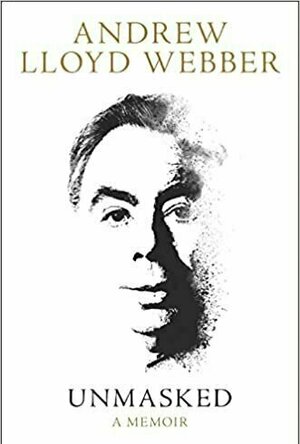
Unmasked: A Memoir
Book
“You have the luck of Croesus on stilts (as my Auntie Vi would have said) if you’ve had the sort...

GPS Kit HD
Navigation and Travel
App
- TIME Magazine’s 15 Fantastic Gadgets “Perfect for hiking or mountain biking.” - TUAW.com ...

Reiner Knizia's Ra
Games and Entertainment
App
Summer Sale + 64bit update celebration! We are working hard to avoid the Appocalypse - help support...
Hazel (1853 KP) rated God: A Human History in Books
Nov 5, 2017
Where did religion come from? This is the question Reza Aslan, a scholar of religions, attempts to answer in his latest publication, God: A Human History. To date, Aslan has tackled subjects such as the life of Jesus of Nazareth, and the origins, evolution and future of Islam. In this book, the author journeys back to the earliest evidence of human existence and, using a mix of resources, theories and investigations, tries to determine how our ancestors conceived the idea of gods and souls. Maintaining the idea that the majority of humans think of God as a divine version of ourselves, Aslan also looks at the way our perception of life after death has altered due to the changes in our governments and cultures.
Reza Aslan claims that he, a Muslim-devout-Christian-convert-turned-Sufi, is neither trying to prove or disprove the existence of God or gods. Instead, he is providing readers with a thorough history of religion with a strong suggestion that we, as believers, have fashioned God in our image, and not the other way around.
Insisting that belief systems are inherited from each previous generation, Aslan takes a look at ancient cave drawings where he, and many other theorists, surmise that a form of religion was already well underway. Lack of written word results in a lot of speculation and hypothesis as to what these, usually animal-like, drawings represent, however, many have come to the conclusion that early humans had some form of animistic belief system.
Although not a dig at religion, after all, the author is religious himself, the following chapters bring in to question the authenticity of past and present beliefs. With reference to various psychologists, Aslan poses the theory that ancient humans may have misinterpreted dreams as evidence of a spirit realm. With no one qualified to clarify the things they did not understand, anything without a clear explanation may have been attributed to a god or gods.
As the author describes how religious ideas may have developed from these primitive beliefs to the fully detailed faiths of today, he labels the human race as anthropocentric creatures that have based their religions on human traits and emotions. By reporting in this way, it comes across that the past ideas of the soul, spiritual realms, gods and so forth could not possibly be true, yet, as the final chapters suggest, Aslan is still adamant about the existence of God.
Aslan’s narrative speeds up, finally reaching the recognizable religions of today. Beginning with the Israelites, enslaved by the Egyptians, the author explains, using biblical references, how the first successful monotheistic religion came about. However, researchers have studied the early Bible texts and are inconclusive as to whether the God worshipped by the Jews was the only divine being or whether there were others of a similar standing.
Next, Aslan explores Christianity, posing more questions than he solves, for example, is God one or is God three (i.e. the Holy Trinity)? He defines and compares the definitions of monotheism and pantheism, eventually bringing in Islam and the development of Sufism, which he is not afraid of admitting he agrees with.
God: A Human History is disappointingly short, ending with the feeble conclusion that humans are born with the ability to be convinced of the existence of a divine being and the soul, but it is our own choice to decide whether or not to believe in them. The remaining third of the book is an abundance of notes on the texts, bibliographical references, and Reza Aslan’s personal opinions about the ideas and theories mentioned in his history of religion.
Although an extensive history on the origins of religion, God: A Human History leaves readers none the wiser as to whether their belief is founded in truth or whether it is something that has evolved over time due to lack of understanding about the world. Granted, it was not the aim of the book to prove or disprove the existence of God, however, it may unintentionally sow seeds of doubt or, potentially, anger devout believers. However, there is no attempt at persuading readers to believe one thing or another, thus making it suitable for people of all religion and none.
Heather Cranmer (2721 KP) rated A Nearly Normal Family in Books
May 14, 2019
The plot for A Nearly Normal Family is very intriguing indeed. Eighteen year old Stella becomes involved with an older man named Christopher. She's having the time of her life. When she learns more about her romantic interest, she's having a hard time believing the bad stuff is true. It's not long before Christopher is found murdered, and Stella is the main suspect. Told from the point of view from Stella's father, Stella, and Stella's mother, we learn what really happened that night, what led to all of this drama, and what happens afterwards. We also learn how far people will go to protect the ones they love. I found myself not wanting to guess what happened with this book. I wanted everything to be a complete surprise which it was. There are a few twists and turns throughout this novel which I did enjoy. I loved that this book tied up any loose ends by the end of the book, and nothing was left to speculation. I hate having to guess what happened after the main mystery has been solved, so I was thrilled when I had all my answers. I'm a stickler for closure!
The characters were all very well developed and fleshed out enough that they felt real. We are introduced to Adam, Stella's father, first. We see his relationship with his daughter, his wife, and with God since he's a pastor. He relies heavily on his faith to get him through things. He's an upstanding member of the community and very trustworthy. I found Adam to be the most interesting to read about. It was interesting to read about his response to his daughter being accused of murder. Next, we are introduced to Stella's point of view. Stella is accused of murdering her boyfriend, Christopher. She's eighteen and has a devil may care attitude when it comes to everything. Some points throughout the book, I felt she was innocent of the crime, but there were other times she seemed very guilty. I couldn't figure her out. It was interesting to read about what had happened throughout her young life to get to the predicament she was in. Finally, we learn the perspective from Ulrika, Stella's mother. I didn't think I would be able to connect with Ulrika right at first, but I found myself understanding her quickly. Ulrika is a criminal defense attorney, so it was interesting reading about her perspective on everything. I was happy that Ulrika didn't use legal jargon too often. Although we don't get to read things from her perspective, the character of Amina, Stella's best friend, was also intriguing. I loved reading about the girls' friendship throughout the years and how loyal they were to one another.
The pacing was spot on! Every time the story would change perspectives, I thought I'd get bored with the change of character, but I was sucked in right away same as before. I devoured page after page of A Nearly Normal Family. I couldn't wait to find out more and learn about motives and what would happen.
Trigger warnings include profanity, alcohol use, drug use, violence (not very graphic), rape (not very graphic, mentions of sex (not graphic), and murder.
Overall, A Nearly Normal Family is a very intriguing read that pulls you in from the very first page and doesn't let you go even after it ends. I would definitely recommend A Nearly Normal Family by M.T. Edvardsson to those aged 18+ who like to get lost in well written thrillers!
--
(A special thank you to the publisher for providing me with an ARC paperback of A Nearly Normal Family by M.T. Edvardsson in exchange for an honest and unbiased review.)
